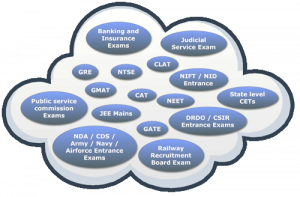Best Books to Read in 2023
Best Books to Read in 2023 Are you a bookworm or a bibliophile, if yes, then this is the ...
The recent decision to dramatically increase stipends for JRF, SRF, and RA fellowships by the Government marks a major turning point that has sparked confidence throughout the academic scene in India. Dedicated research researchers have long spoken about the need for more funding to enhance their academic endeavours, and this historic step responds to their voices.
Also, read Difference between NTA UGC NET and JRF

This landmark decision comes on the heels of persistent appeals by research scholars who have long championed the cause of greater financial support to fortify their academic undertakings. This blog delves into the comprehensive framework of the revised stipend rates, the compelling rationale behind this increase, and the multifaceted reactions emanating from the academic community.
The revised fellowship stipends, effective from January 1, 2023, mark a momentous escalation in the financial backing extended to research scholars in India. Here are the pivotal modifications:

The augmentation of fellowship stipends reflects a well-considered response to numerous pressing concerns within the academic arena. Several factors have coalesced to instigate this pivotal decision:
Also, read 10 Compelling Reasons Why Online Learning is the Future ?

The augmentation of stipends, while a cause for celebration, has not fully assuaged the expectations of the research community. Some scholars and associations had pressed for a more formidable 60% increase in stipends, citing the inevitable ascent of living expenses and the dire need for a substantial raise.
In response to the stipend increase of 19% for JRF and 20% for SRF, a palpable sense of dissatisfaction has permeated the research landscape. Scholars argue that the revised stipends still fall short of expectations, given the arduous and time-intensive nature of their research and development endeavours.
The All India Research Scholars Association (AIRSA) has boldly called for a nationwide shutdown to register their discontent with the stipend hike. Their impassioned plea underscores the necessity for a more substantial augmentation that will enable scholars to immerse themselves in their research pursuits without the undue burden of financial constraints
The government’s firm move to raise the stipends for the Junior Research Fellowship (JRF), the Senior Research Fellowship (SRF), and the Research Associateship (RA) is a decisive step forward in strengthening R&D in India. The persistent difficulties that academics confront in pursuing their research goals are shown by the widespread need for a more significant increase.
It remains to be seen how the government responds to the academic community’s calls for more funding and whether or not it is willing to further change stipend rates to reflect growing research and living expenses. There is a constant tension in this story between the desire for scientific excellence and the need for fair funding distribution in India.
In this ongoing saga, the destiny of India’s research ecosystem hangs in the balance, poised between aspirations for excellence and the quest for equitable financial support.
Also, read Distance Learning vs. Online Learning : A Comprehensive Guide
Meet Tanu Bhatnagar, an educational expert with extensive experience in teaching, research and mentoring.With a decade in... (Full bio)

Best Books to Read in 2023 Are you a bookworm or a bibliophile, if yes, then this is the ...

In the exhilarating journey of 10 Proven Memorize Techniques for Students learning, memory is your trusty companion. Whether ...

Top 20 toughest exams in world is about exams in the world that required very hard work to ...

Top 20 toughest exams in India - Exams are the perhaps most toughest moments for any student. A ...

Top 20 Colleges of DU Getting admissions to the top 20 colleges of DU is a dream for every ...

Top 20 NITs of India - Amongst the 31 NITs in India, today, we are talking ...

Here are the Top 12 Artificial Intelligence in Mumbai. Artificial intelligence (AI) refers to the simulation of human ...

As you stand on the Best Science Courses after 12th academic journey, the realm of science beckons, offering ...
Millions of students have entrusted CollegeChalo to facilitate their seamless and smooth admission process to their dream colleges and universities. With CollegeChalo, you can gain a competitive edge by easily accessing exam and course details to stay ahead of the admission journey. What are you waiting for?
Search your dream college